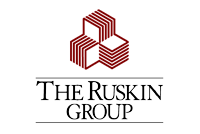For sustainable packaging, 2020 is set to be a year of action and reaction, building on the fast-growing trends we have seen in the last two years, as subject matter expert Nina Goodrich laid out in her recent article. Here are the critical sustainable packaging trends to look out for in 2020.
1. More companies announce sustainable packaging goals and create action plans.
In 2018 and 2019, a deluge of brands publicly announced new goals to make their packaging more sustainable, particularly in regards to plastic packaging and the looming threat of losing social license to use plastics if we do not find a way to better recover them and prevent their leakage into the environment. This includes commitments made by individual companies, as well as collective commitments like the New Plastics Economy.
The majority of companies with these goals committed to achieve them by 2025 or 2030, and so 2020 represents a strategic turning point for action. These companies will need to put robust plans into place to achieve their goals and invest resources into implementing those plans. Companies that have yet to make such sustainability commitments will join the pack this year, or else risk falling behind the curve of their competitors
2. Companies innovate to boost end markets for recycled plastics.
There are a growing number of announcements by suppliers who have created packaging using high levels (more than 90%) of recycled content in plastics, both from post-consumer and post-industrial sources. There is growing awareness for the need to create viable end markets for recycled material as a way to help brands meet their sustainable packaging goals. Recycled content will surely be a route many suppliers actively explore this year.
In addition, there will also be collaboration across the value chain to improve processing of used plastics to be reused in new applications. Partnerships around chemical recycling have taken off at a tremendous rate, such as the partnership with Recycling Technologies, Total, Nestlé, and Mars to develop an oil from mixed flexible packaging that will be used to produce new polymers, creating new end markets that were not possible for these materials before. While resin manufacturers are not themselves often recyclers, there will be more of these types of chemical recycling collaborations emerging.
Developing these markets is critical to avoid losing viability of recycling for different products.
3. Brands replace substrates to meet recovery goals.
In the hysteria around plastics and meeting recovery goals for packaging, some companies are exploring alternatives. We have seen a rise in paper-based solutions, as well as other recyclable, compostable, and even edible substrates being launched at scale. The market is in reactionary mode, which will likely continue through 2020 and beyond.
While innovation in new packaging designs can be exciting and promising, this can also potentially be a negative trend, as plastics often have a positive carbon story compared to other substrates. The Sustainable Packaging Coalition advocates for each design decision to carefully consider carbon and other environmental impacts to avoid just shifting the problem towards other environmental impacts to achieve recyclability.
____________________________________________________________________________________________
 Find your success! Subscribe to free Packaging Digest enewsletters.
Find your success! Subscribe to free Packaging Digest enewsletters.
____________________________________________________________________________________________
4. Companies start taking reusable packaging more seriously.
Reuse is a main element of the New Plastic Economy’s Global Commitment, and the growing number of signatories areassessing their packaging portfolios, looking for opportunities in reusables. Companies like Blue Bottle Coffee and Unilever have announced plans to scale up reuse and refill business models.
Ecommerce startups are increasingly penetrating the market with reusable shipping models to replace short-lived plastic or paperboard packaging with closed-loop logistics models that work beyond business-to-business (B2B). The emphasis on reducing and reusing, which rank higher on the waste hierarchy than recycling, is again becoming an important part of the packaging sustainability conversation.
5. Material health becomes more important in packaging.
The recent announcement from the How2Recycle labeling program states that any packaging that contains intentionally added per- and/or poly-fluoroalkyl substances, or PFAS, will be labeled as Not Yet Recycled. This is one of multiple indicators that this year does not look good for PFAS.
PFAS are commonly used in foodservice packaging and are often referred to as “forever chemicals” due to their persistence in the environment. The health impacts of short-chain PFAS are being called into question by the scientific community and companies are being pressed over efforts to downplay health risks.
Regulations are emerging in Europe and being discussed in North America. Some companies have already stopped making PFAS products for packaging. Thought leader William McDonough noted that the Circular Economy is no good if we are cycling toxic materials in a state of circular “retox.” The products we recycle should be safe, and then circular.
https://www.packagingdigest.com/sustainable-packaging/5-sustainable-packaging-trends-to-look-out-for-in-2020-2020-02-21
Comments are closed.

